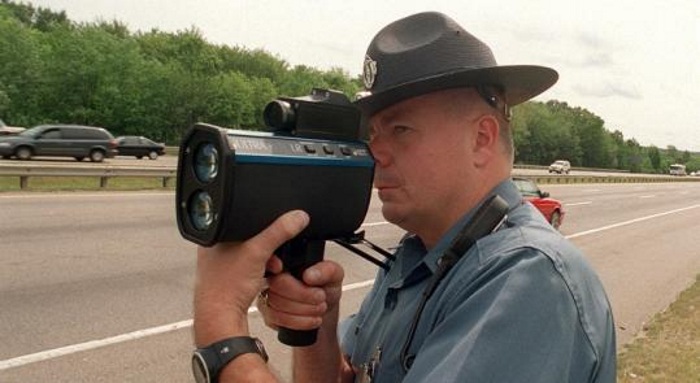A majority of us have done this before (heck, I even did it this morning): you’re driving through a school zone and see a police car parked on the side road with a radar gun pointing out the window. So you lower your speed and pass through the area without getting pulled over. As soon as you’re in the clear, you whip out your phone and send a quick text to your husband, wife, or friend, letting them know there’s a cop in the area and to be careful of your speed.

ComSonics, a company in Virginia is looking to expand the use of the radar gun, and should they be successful with updating the technology, that same police officer can keep his gun trained on you and the moment you click “send” on your device, he’ll have recorded the proof he needs to show that you were texting while driving.

Staff at ComSonics have been working on the technology for some time now and claim that it’s not that far away from being ready for production. Service Manager Malcolm McIntyre explained that the technology itself is similar to what cable repairmen use to find where a cable is damaged; it’s simply scanning for frequencies leaking in a transmission.
A bit more specifically, a text message emits different frequencies than that of a phone call or data transfer (e.g. streaming music), and so can be distinguished by the device from a distance.
McIntyre did admit, though, that there are still some legal obstacles to overcome before the guns find their way into law enforcement vehicles. For instance, his engineers need to ensure that the technology is accurate enough that it can identify which phone was being used in a car containing multiple passengers; if not, law enforcement may only be able to stop cars with just one driver.
Also, as voice assistant technology becomes more sophisticated, and the software continues to be used in future generations of smart cars, when an individual sends a text using the technology instead of physically typing it out themselves, what happens?
Lastly, and perhaps most importantly, the public needs to be assured that the device cannot detect the content within the message. Right now, the only thing the company has is McIntyre’s assurance that the technology does not possess the capability of being able to de-crypt information sent by drivers.
Texting and driving is not illegal in all States, but it is a law in several already, and has enough traction that it’s only a matter of time before it’s nationwide.
For those curious or otherwise unaware as to whether or not texting while driving is illegal where they live, note that the practice has been outlawed for all drivers in the following states: Arkansas, California, Colorado, Connecticut, Delaware, District of Columbia, Florida, Georgia, Illinois, Indiana, Iowa, Louisiana, Maryland, Massachusetts, North Dakota, Michigan, Minnesota, Nevada. New Hampshire, New Jersey, New York, North Carolina, Oregon, Pennsylvania, South Carolina, Tennessee, Utah, Vermont, Virginia, Washington, Wisconsin, and Wyoming.
Story via AutoEvolution
Advertisement
Learn more about Electronic Products Magazine





